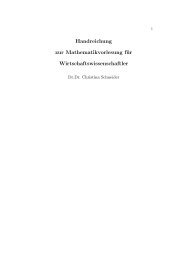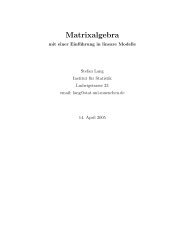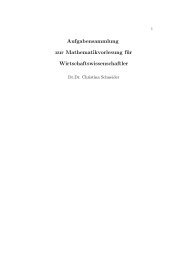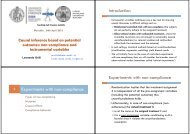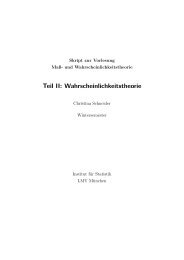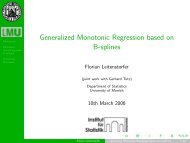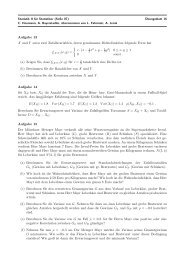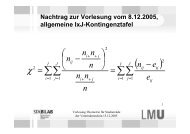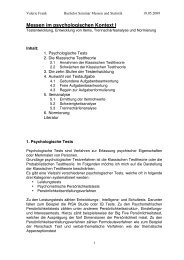You also want an ePaper? Increase the reach of your titles
YUMPU automatically turns print PDFs into web optimized ePapers that Google loves.
10<br />
between the J penalty terms then the recording is additive. Consequently, the required<br />
memory will be reduced and the speed of computation increases. This improving principle<br />
is used by the get.Amat() function.<br />
3 Basic structure of the <strong>lqa</strong> package<br />
In this section we describe the basic structure of the <strong>lqa</strong> package. As illustrated in Table<br />
3, there is an elemental hierarchy of four methods (or classes of methods). As for the<br />
implementation of the penalties and their related methods we use the R concept of S3<br />
classes. At the lowest level there is the generic function <strong>lqa</strong>(). Its task is <strong>to</strong> determine<br />
the class of its arguments and <strong>to</strong> use this information <strong>to</strong> select an appropriate method.<br />
Therefore they are also called dispatching methods. The function calls of the methods<br />
on the next two levels are<br />
## S3 method for class ’formula’:<br />
<strong>lqa</strong>(formula, data = list (), weights = rep (1, nobs), subset,<br />
na.action, start = NULL, etastart, mustart, offset, ...)<br />
at level II and<br />
## Default S3 method:<br />
<strong>lqa</strong>(x, y, family = gaussian (), penalty = NULL, method = "<strong>lqa</strong>.update2",<br />
weights = rep (1, nobs), start = NULL,<br />
etastart = NULL, mustart = NULL, offset = rep (0, nobs),<br />
control = <strong>lqa</strong>.control (), intercept = TRUE,<br />
standardize = TRUE, ...)<br />
at level III.<br />
As you can see, the S3 method for class formula requires less arguments than the default<br />
S3 methods at the next level. This is due <strong>to</strong> the extraction and ‘translation’ of information<br />
from the formula environment in the <strong>lqa</strong>.formula() function before <strong>lqa</strong>.default() is<br />
called. As a conclusion, for a user it is more comfortable <strong>to</strong> enter at the lowest possible<br />
level. Nevertheless, the big advantage from using S3 methods is that the user simply<br />
calls <strong>lqa</strong> with either one of the possible representations as the argument. The internal<br />
dispatching method will find the class of the object and apply the right method. Note<br />
that just looking at the syntax of the function call for the class formula is misleading<br />
for applications. As the function <strong>lqa</strong>.formula() is primarily meant <strong>to</strong> provide the data<br />
included in the formula environment, there are no input arguments necessary concerning<br />
the penalty or the fitting method. But those are <strong>to</strong> be specified for higher level methods.<br />
Therefore please use the examples at the next section as a guide <strong>to</strong> your applications <strong>to</strong><br />
the <strong>lqa</strong>() function.<br />
As you can see in Table 3 there are two main functions involved in the parameter estimation.<br />
The first is the default function (<strong>lqa</strong>.default()). This function can be interpreted



